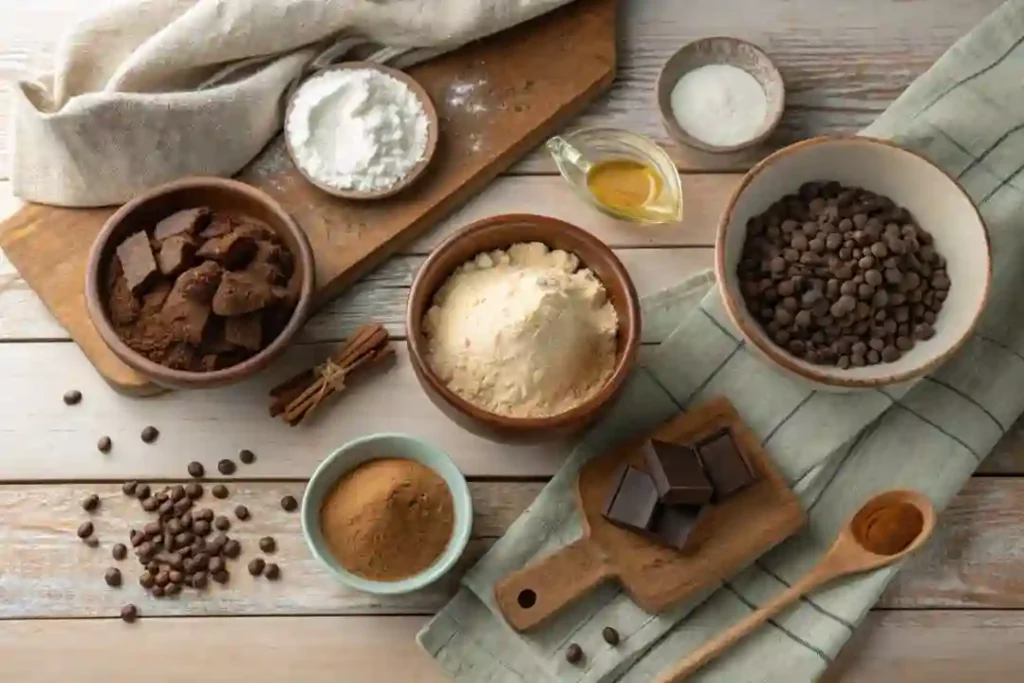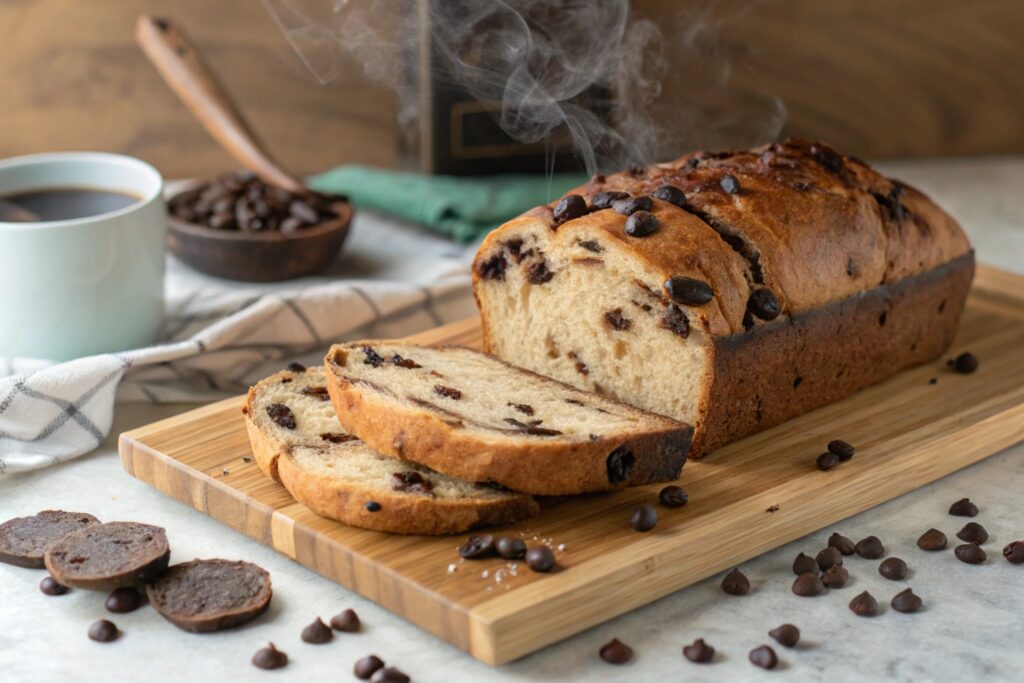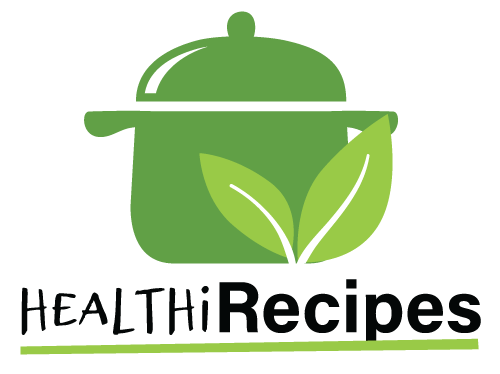
Table of contents
1. Introduction to Chocolate Sourdough Bread
Chocolate sourdough bread is a delightful twist on traditional sourdough, combining the rich flavors of chocolate with the tangy notes of fermented dough. This unique bread not only satisfies your sweet tooth but also offers the chewy texture and crusty exterior that sourdough enthusiasts love.
- Why Choose Chocolate Sourdough?
- It’s a perfect blend of sweet and savory.
- The fermentation process enhances the flavor profile.
- It can be enjoyed as a dessert or a special breakfast treat.
In this guide, we will walk you through the process of making chocolate sourdough bread, from selecting the right ingredients to baking the perfect loaf.
2. Ingredients for Chocolate Sourdough Bread

To create a delicious chocolate sourdough bread, you’ll need a few essential ingredients. Here’s what you’ll need:
- Sourdough Starter: The backbone of any sourdough recipe, a healthy starter is crucial for fermentation.
- Bread Flour: Provides the structure and chewiness.
- Cocoa Powder: Adds the rich chocolate flavor.
- Chocolate Chips: For bursts of chocolate in every bite.
- Sugar: Enhances sweetness and aids in browning.
- Salt: Balances flavors and strengthens the dough.
- Water: Hydrates the flour and activates the yeast.
Tips for Selecting High-Quality Ingredients
- Sourdough Starter: Ensure your starter is active and bubbly. Feed it a few hours before you plan to bake.
- Flour: Opt for high-protein bread flour for better gluten development.
- Cocoa Powder: Use unsweetened cocoa powder for a deep chocolate flavor.
- Chocolate Chips: Choose high-quality chocolate for the best taste.
Importance of Measuring Ingredients Accurately
Accurate measurements are vital in baking. Use a kitchen scale for precision, especially when measuring flour and water. This ensures consistent results and helps achieve the desired texture in your bread.
3. Step-by-Step Guide to Making Chocolate Sourdough Bread
Preparing the Sourdough Starter
Before you begin, make sure your sourdough starter is ready. Here’s how to prepare it:
- Feed Your Starter: Mix equal parts of flour and water into your starter. Let it sit at room temperature for 4-6 hours until it’s bubbly and has doubled in size.
- Signs of a Healthy Starter: Look for bubbles on the surface and a pleasant, slightly tangy smell. If it passes the “float test” (a spoonful of starter floats in water), it’s ready to use.
Mixing the Dough
Once your starter is ready, it’s time to mix the dough.
- Autolyse Process:
- In a large mixing bowl, combine the bread flour, cocoa powder, and water.
- Mix until no dry flour remains. Let it rest for 30 minutes. This process helps with gluten development.
- Incorporating Ingredients:
- After the autolyse, add the active sourdough starter, sugar, and salt.
- Mix until fully combined. The dough will be sticky but should come together.
Bulk Fermentation
Bulk fermentation is where the magic happens. This is when the dough rises and develops flavor.
- Kneading and Folding:
- Knead the dough for about 5-10 minutes until it becomes smooth and elastic.
- Alternatively, you can use the stretch and fold method. Every 30 minutes, stretch the dough and fold it over itself. Repeat this for 2-3 hours.
- Ideal Temperature and Time:
- Keep the dough in a warm environment (around 75°F to 80°F) for optimal fermentation.
- The bulk fermentation should last about 4-6 hours, or until the dough has doubled in size.
Shaping and Proofing
After bulk fermentation, it’s time to shape your dough.
- Shaping the Dough:
- Gently turn the dough out onto a floured surface.
- Shape it into a round or oval loaf, depending on your preference.
- Using a Proofing Basket:
- Place the shaped dough into a floured proofing basket, seam side up.
- Cover it with a damp cloth and let it proof for 1-2 hours at room temperature, or overnight in the refrigerator for a more complex flavor.
4. Baking Your Chocolate Sourdough Bread

Preheating the Oven
Before baking, preheat your oven to 450°F (232°C).
- Importance of a Hot Oven: A hot oven is crucial for achieving a good rise and crust. If using a Dutch oven, place it inside the oven to preheat as well.
Scoring the Bread
Scoring is an essential step that allows the bread to expand while baking.
- Techniques for Scoring:
- Use a sharp razor blade or a bread lame to make shallow cuts on the surface of the dough.
- Create a design or simply make a few slashes to allow steam to escape.
Baking Time and Temperature
- Baking the Bread:
- Carefully place the dough into the preheated Dutch oven.
- Cover with the lid and bake for 30 minutes.
- Finishing the Bake:
- After 30 minutes, remove the lid and bake for an additional 15-20 minutes until the crust is deep brown and the internal temperature reaches 200°F (93°C).
5. Understanding the Science Behind Chocolate Sourdough
Baking is as much a science as it is an art. Understanding the interactions between ingredients can help you achieve the best results. Here, we’ll explore how cocoa powder, chocolate, and fermentation affect your chocolate sourdough bread.
How Does Cocoa Powder Affect Sourdough?
Cocoa powder plays a significant role in the flavor and texture of chocolate sourdough bread.
- Flavor Enhancement: Cocoa powder adds a rich, chocolatey flavor that complements the tanginess of sourdough. The bitterness of cocoa balances the sweetness from sugar and chocolate chips.
- Color and Texture: It darkens the dough, giving it an appealing appearance. The fine particles of cocoa can also affect the crumb structure, making it denser.
- Gluten Interaction: Cocoa powder can absorb moisture, which may impact gluten development. Ensure you adjust the hydration of your dough accordingly to maintain the right consistency.
Why Is Sourdough Bread Not Fattening?
Sourdough bread, including chocolate sourdough, is often considered a healthier option compared to other types of bread.
- Fermentation Benefits: The fermentation process breaks down gluten and phytic acid, making nutrients more bioavailable. This can aid digestion and improve gut health.
- Lower Glycemic Index: Sourdough has a lower glycemic index than regular bread, meaning it causes a slower rise in blood sugar levels. This can help with weight management.
- Nutritional Value: Sourdough bread retains more nutrients due to the fermentation process, providing essential vitamins and minerals.
Does Chocolate Sourdough Take Longer to Ferment?
Fermentation time can vary based on several factors, including the addition of chocolate.
- Impact of Ingredients: The sugar content from chocolate and cocoa can slow down fermentation. Yeast may take longer to consume the sugars, resulting in a longer fermentation time.
- Temperature Considerations: Warmer temperatures can speed up fermentation, while cooler environments may slow it down. Monitor your dough closely to determine the optimal fermentation time.
- Signs of Readiness: Look for the dough to double in size and develop a bubbly surface. This indicates that fermentation is progressing well.
Does Chocolate Affect Yeast?
Chocolate can have both positive and negative effects on yeast activity.
- Sugar Content: The sugars in chocolate can provide additional food for yeast, potentially enhancing fermentation. However, too much sugar can lead to an overly sweet dough that may not rise properly.
- Fat Content: Chocolate, especially if using chocolate chips, contains fat, which can inhibit yeast activity. This is why it’s essential to balance the amount of chocolate with the overall hydration of the dough.
- Best Practices: Use high-quality chocolate in moderation to ensure that yeast can thrive while still achieving the desired chocolate flavor.
Is Chocolate Bad for Yeast Infections?
This is a common concern for those who experience yeast infections.
- Chocolate and Yeast: While chocolate itself is not inherently bad for yeast infections, it’s essential to consume it in moderation. High sugar content can promote yeast growth, so balance is key.
- Dietary Considerations: If you are prone to yeast infections, consider reducing sugar intake in your diet, including the sugar in chocolate sourdough.
- Consult a Professional: If you have specific health concerns, it’s always best to consult with a healthcare professional for personalized advice.
6. Conclusion
Baking chocolate sourdough bread is a rewarding process that combines the rich flavors of chocolate with the unique characteristics of sourdough. By following this step-by-step guide, you can create a delicious loaf that will impress your family and friends.
- Embrace the Journey: Each loaf is an opportunity to learn and experiment. Don’t be afraid to make adjustments and find what works best for you.
- Share Your Experience: We’d love to hear about your baking adventures! Share your results, tips, and any variations you tried.
For more chocolatey inspiration, check out our Dubai Chocolate Bar Recipe for another delightful treat. If you’re in the mood for something different, try our Ultimate Brookie Recipe or indulge in the Slutty Brownie Recipe for a rich dessert experience.
Thank you for joining us on this journey to make chocolate sourdough bread. Happy baking!.
7. FAQs
- How does cocoa powder affect sourdough?
- Cocoa powder enhances flavor and color but can impact gluten development.
- Why is sourdough bread not fattening?
- Sourdough has a lower glycemic index and is easier to digest due to fermentation.
- Does chocolate sourdough take longer to ferment?
- Yes, the sugar content in chocolate can slow down fermentation.
- Does chocolate affect yeast?
- Chocolate can provide food for yeast but may also inhibit activity due to its fat content.
- Is chocolate bad for yeast infections?
- Moderation is key; high sugar content can promote yeast growth.
